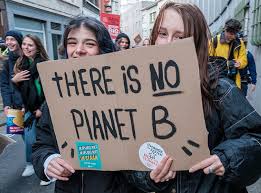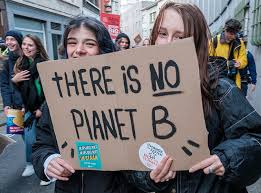
The report titled “Bridging ESG Silos: The Intersection of Climate Change and Modern Slavery” by Walk Free and AllianceBernstein aims to guide investors in comprehending and responding to the interconnections between significant risks associated with climate change, the shift to renewable energy, and modern slavery.
Investors are progressively facing the tangible risks of climate change, which include extreme weather conditions and escalating natural disasters, as well as transition risks that arise as economies and societies progress towards de-carbonisation. There are evident correlations between climate change, the energy transition, and an increased susceptibility to human rights violations such as human trafficking and modern slavery.
Presently, conscientious investors incorporate crucial environmental, social, and governance (ESG) factors into their investment decisions. However, ESG integration often remains compartmentalised and overlooks crucial interconnections between issues. These interconnections are particularly significant between environmental and social factors, such as climate change and modern slavery.
The report employs seven case studies to illustrate how investors can be vulnerable to modern slavery risks arising from climate change and the energy transition. It also provides insights for investors to help them address actual or potential impacts and introduces new tools for managing and disclosing climate-related modern slavery risks: a climate-reporting supplement and investor stewardship guidance.
CASE STUDIES
Physical risks case study Key points for investors:
Investors are progressively facing the tangible risks of climate change, which include extreme weather conditions and escalating natural disasters, as well as transition risks that arise as economies and societies progress towards de-carbonisation. There are evident correlations between climate change, the energy transition, and an increased susceptibility to human rights violations such as human trafficking and modern slavery.
Presently, conscientious investors incorporate crucial environmental, social, and governance (ESG) factors into their investment decisions. However, ESG integration often remains compartmentalised and overlooks crucial interconnections between issues. These interconnections are particularly significant between environmental and social factors, such as climate change and modern slavery.
The report employs seven case studies to illustrate how investors can be vulnerable to modern slavery risks arising from climate change and the energy transition. It also provides insights for investors to help them address actual or potential impacts and introduces new tools for managing and disclosing climate-related modern slavery risks: a climate-reporting supplement and investor stewardship guidance.
CASE STUDIES
Physical risks case study Key points for investors:
- Recognize and track if operations and/or supply chains are located in an area prone to sudden climate-related incidents.
- Determine if labor issues are considered in these high-risk regions, such as the risk of mass migration following sudden climate-related incidents.
- Recognize and track if any labor-intensive segments of operations and/or supply chains are in an area prone to producing or receiving a large number of climate migrants.
- Understand if due diligence is being performed in these high-risk regions and within labor-intensive parts to identify modern slavery risks and work to mitigate them, remedy adverse impacts, track and measure progress, and report any findings.
Transition risk case study Key points for investors:
- Determine if a responsible sourcing policy for cobalt aligns with relevant aspects of the OECD’s Due Diligence Guidance for Responsible Supply Chains of Minerals from Conflict Affected and High-Risk Areas, and how this policy is implemented.
- Understand what percentage of DRC-origin cobalt in a supply chain is linked to artisanal and small-scale mining.
- Determine if a supplier code of conduct reflects relevant international standards, such as the ILO’s Declaration on Fundamental Principles and Rights at Work, which covers child labor, and how compliance of suppliers is assessed.


 Climate Change and Modern Slavery: Investor Insights from Case Studies
Climate Change and Modern Slavery: Investor Insights from Case Studies




 Companies
Companies